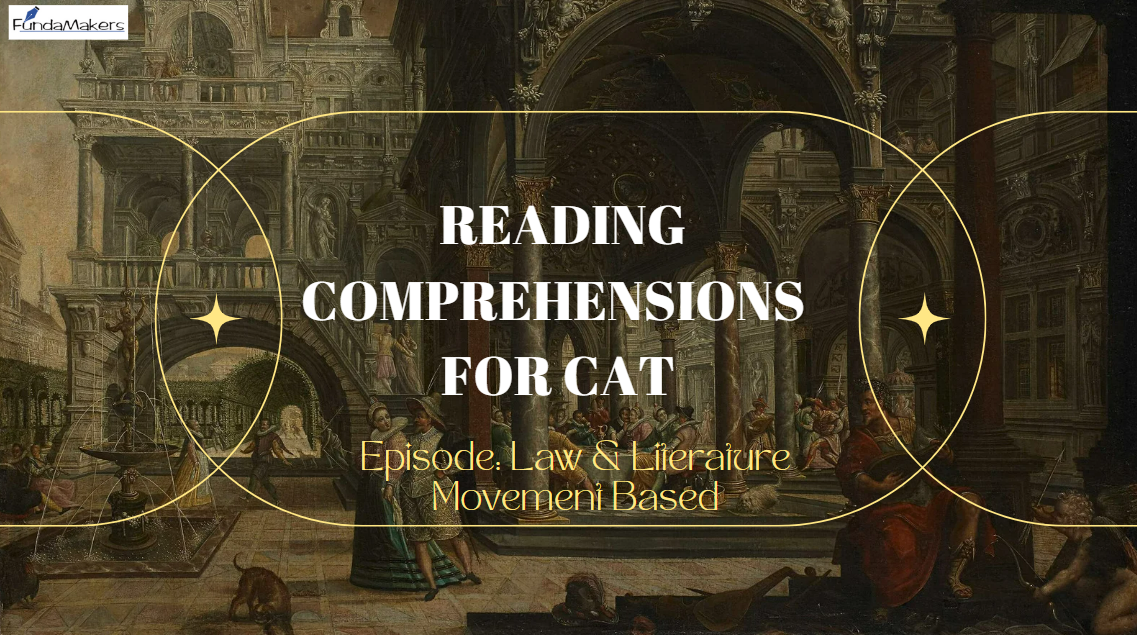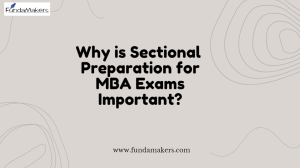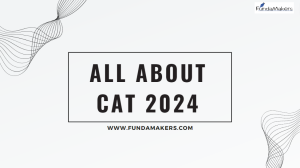In the pursuit of mastering the Verbal Ability and Reading Comprehension (VARC) section for competitive exams like the CAT, delving into passages that intertwine law and literature is not just advantageous but essential. These passages offer a unique blend of analytical thinking and nuanced understanding, mirroring the complexities of both legal discourse and literary interpretation. Engaging with such content sharpens critical reading skills, enhances comprehension abilities, and fosters a deeper appreciation for the interplay between law and literature. Furthermore, as the VARC section often includes passages with diverse themes and subject matters, familiarity with legal and literary contexts broadens one’s repertoire of comprehension strategies.
To glean insights into the symbiotic relationship between law and literature, explore the passages below in our blog. Happy reading!
Passage 1.
Literary compositions are crafted by authors and are accessible for any ordinary individual to contribute to the realm of Literature. The standards established for literary works adhere to no strict regulations and thus possess boundless potential. Legislation, on the other hand, is formulated not by just anyone but by legal scholars and knowledgeable attorneys, rendering it unlikely for an ordinary individual to possess the requisite acumen to address societal issues.
Human sentiments are disregarded in the formulation of laws, adhering strictly to impartiality rather than emotion. Conversely, in Literature, there is a pronounced focus on human emotions, with entire narratives, poems, or plays revolving around them. Laws are crafted without consideration for human emotions.
Literary creations often embody fantastical illusions and whims, rooted in the author’s unique perspective on a given situation. Legislation, however, cannot afford such flights of fancy; it must cater to societal needs by dispensing judgments in accordance with “justice, equity, and good conscience” to uphold equality.
The language employed in legal discourse differs significantly from that used in literary expression. While both Law and Literature utilize distinct vocabularies, the former is based on human behavior regulations, while the latter is a personalized expression of human emotions and thoughts. Literature serves as a conduit for individual voices and human concerns, while Law serves to govern human conduct and ensure justice.
Questions:
- What is the main idea of the passage?
- A) Literature and law are fundamentally different in their approach and purpose.B) Literary works and laws both stem from human emotions.C) The language used in law and literature is similar.D) Laws are crafted without consideration for human emotions.
- What distinguishes the creation of literary works from the formulation of laws?
- A) Literary works are based on whims, while laws are based on societal needs.
- B) Both literary works and laws are created by legal scholars.
- C) Literary works adhere strictly to regulations, while laws have boundless potential.
- D) Literary works prioritize rationality over emotion, unlike laws.
- How does the passage characterize the role of human emotions in law and literature?
- A) Human emotions are central to both law and literature.
- B) Laws prioritize human emotions over rationality.
- C) Literature disregards human emotions, unlike law.
- D) Laws are crafted without consideration for human emotions, unlike literature.
- What distinguishes the language used in law from that used in literature?
- A) Both law and literature utilize identical vocabularies.
- B) Literature employs language based on societal regulations.
- C) The language used in law reflects personal thoughts, unlike literature.
- D) Law governs human conduct, while literature serves as a conduit for human emotions.
Passage 2.
The drama “Justice” authored by John Galsworthy addresses the theme of criminality and retribution, censuring the legal framework of the Victorian period wherein affluent individuals consistently evaded punishment while the impoverished endured incarceration. By spotlighting a forgery incident where the perpetrator is incarcerated, ultimately leading to the vindication of justice, Galsworthy aims to compel his audience to acknowledge the dire circumstances prompting a destitute and vulnerable individual to resort to unlawful deeds. The destitute protagonist, Falder, is convicted of check forgery out of necessity to rescue his paramour, Ruth. Meanwhile, Ruth’s affluent spouse faces no repercussions for his mistreatment of her. This depiction of judicial double standards is vehemently denounced in the play.
Question 1: What is the central theme of the play “Justice” by John Galsworthy?
a) The triumph of love over adversity
b) Critique of the Victorian Era judicial system
c) Exploration of forgiveness and redemption
d) Examination of societal norms and values
Correct Answer: b) Critique of the Victorian Era judicial system
Question 2: Who is the protagonist of the play “Justice”?
a) Ruth
b) Falder
c) Ruth’s husband
d) The judge
Correct Answer: b) Falder
Question 3: What action leads to Falder’s imprisonment?
a) Theft
b) Murder
c) Forgery
d) Assault
Correct Answer: c) Forgery
Question 4: What is one major criticism the play “Justice” directs towards society?
a) Lack of empathy towards the poor
b) Inequality in education
c) Overreliance on technology
d) Environmental degradation
Correct Answer: a) Lack of empathy towards the poor
Passage 3.
The Indian production stirred up a heated debate, unveiling the grim realities of orthodox Indian society and how those in positions of power manipulate justice to ridicule a woman accused of infanticide. Vijay Tendulkar emerged as a voice of dissent against the entrenched evils of orthodox society through his play “Silence! The Court is in Session” (Shantata! Court chale aahe). This theatrical piece symbolizes a figurative trial pitting humanists against anti-humanists. In essence, it is a satirical trial of a simple school teacher, Miss Leela Benare, subjected to ridicule in court, accused of infanticide and engaging in an illicit affair with a married professor, Damle, thereby exposing her personal life. The play aims to challenge the misuse of law by a select few orthodox men, as the author questions the legitimacy of legal authority and expresses his viewpoints.
Questions
1.What is the primary theme of “Silence! The Court is in Session”?
a) The triumph of justice over prejudice
b) The exploration of orthodox Indian society and its injustices
c) A celebration of traditional values
d) The portrayal of a simple courtroom drama
Correct answer: b) The exploration of orthodox Indian society and its injustices
2. Who is the main character subjected to ridicule in the play?
a) Professor Damle
b) A married woman
c) Miss Leela Benare, a school teacher
d) A corrupt politician
Correct answer: c) Miss Leela Benare, a school teacher
3. What does the play symbolize in its trial between humanists and anti-humanists?
a) A metaphorical battle between good and evil
b) A commentary on the flaws in the legal system
c) A celebration of orthodox values
d) A historical reenactment of a famous trial
Correct answer: b) A commentary on the flaws in the legal system
4. What is the playwright’s primary critique in “Silence! The Court is in Session”?
a) The empowerment of women in society
b) The misuse of legal authority by the orthodox elite
c) The importance of upholding traditional values
d) The need for stricter laws against infanticide
Correct answer: b) The misuse of legal authority by the orthodox elite
Test your Caliber with us!
FundaMakers provide a series of RCs, and previous year questions based on RCs on our site. Tap on ” CAT Question Bank” and visit our Question bank section perfectly tailored for CAT aspirants.
Visit the link below to understand the weightage and importance of Reading Comprehensions in CAT?




